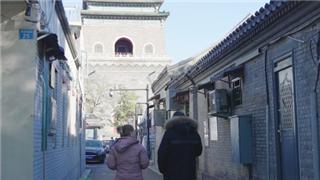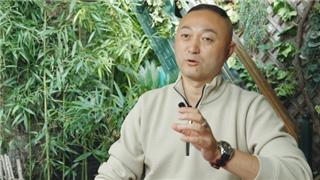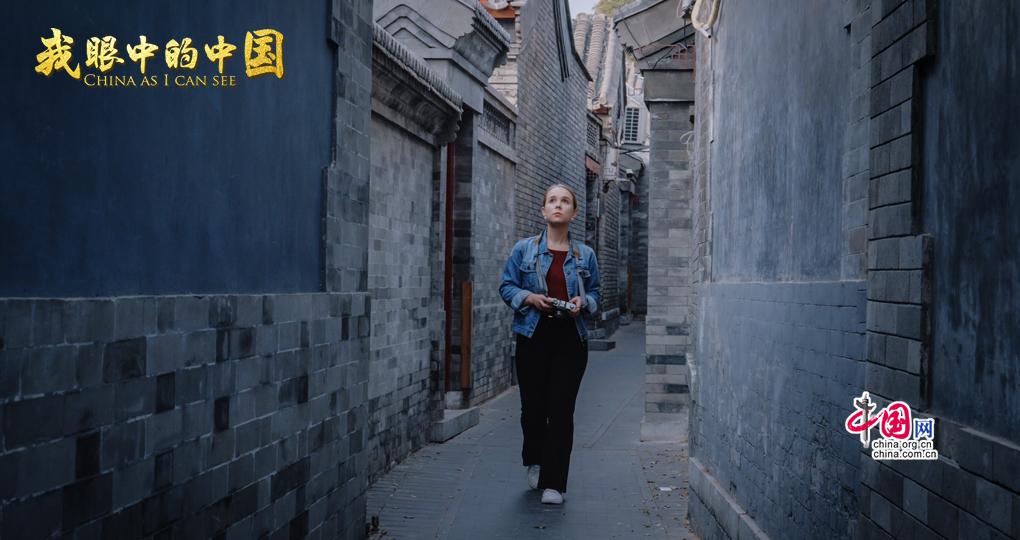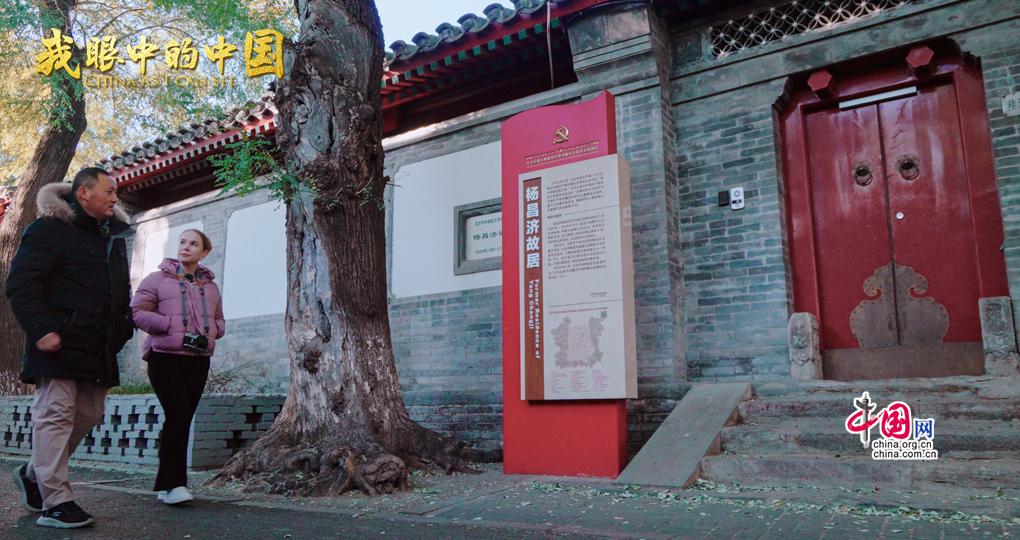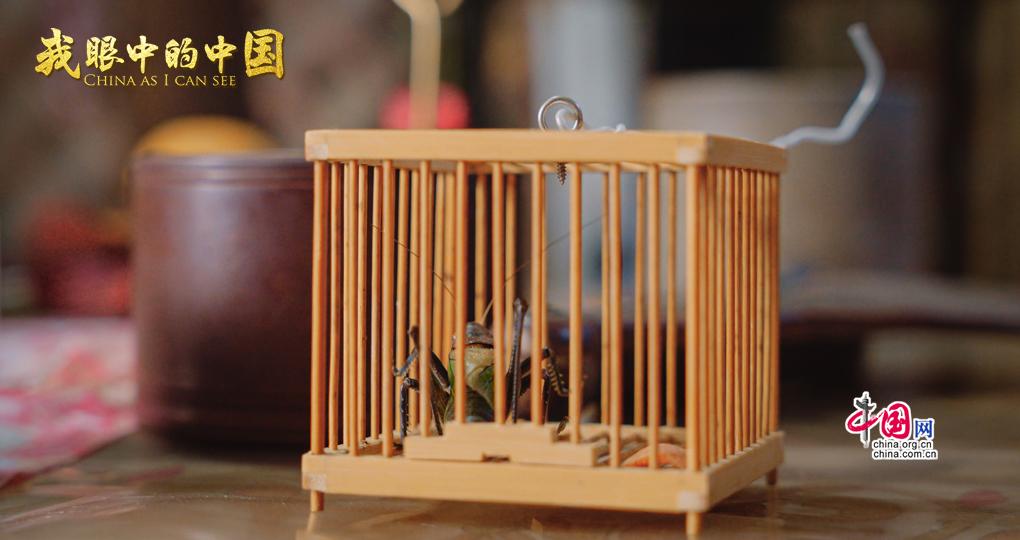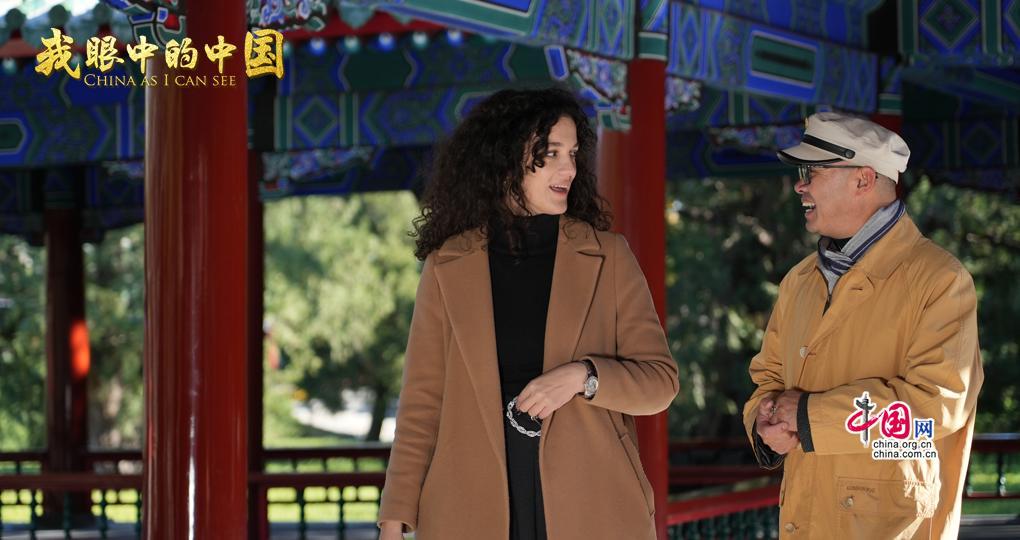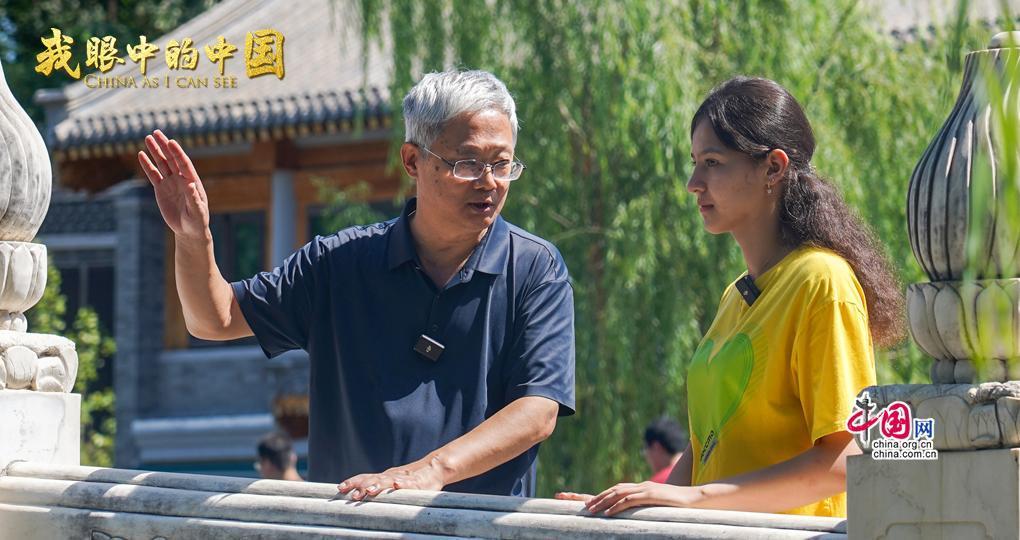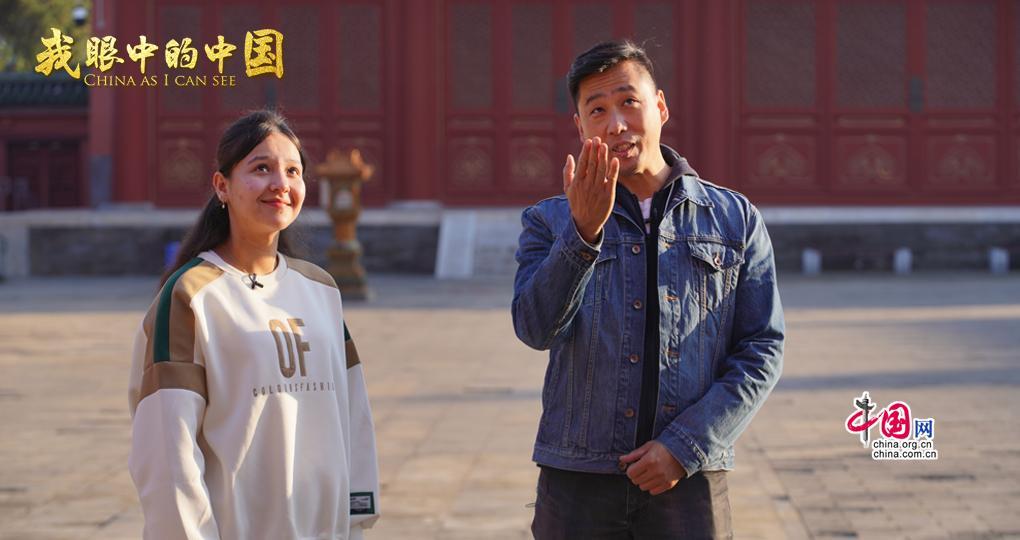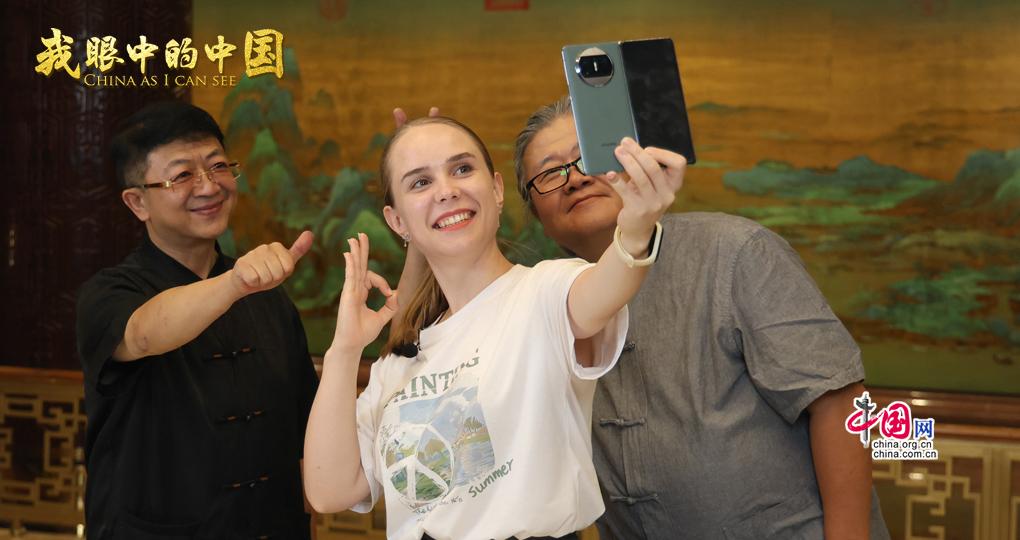晨钟暮鼓为授时 坊间旧忆斗蛐蛐
北京中轴线位于北京老城中心,南起永定门,北至钟鼓楼,近日,哈萨克斯坦留学生安格丽娜接到了一项特殊任务,她将在钟鼓楼附近与中国的专家、老师们一同开启一段奇妙之旅,揭示钟楼与鼓楼的丰富故事,对老北京文化深厚底蕴进行一次深刻探寻。
The Central Axis of Beijing is located in the center of the old city, starting from Yongding Gate in the south and ending at the Bell Tower and Drum Tower in the north. Recently, Angeline, a student from Kazakhstan, received a special task. She would embark on a wonderful journey around the Bell Tower and Drum Tower with the experts and teachers from China. On this journey, she will not only hear about the stories of the Bell Tower and Drum Tower, but also have a deeper understanding of the culture of old Beijing.
“钟鼓楼其实不是一座楼, 他们是分开的两座,一个钟楼,一个鼓楼。”《读城行知》品牌研学特聘专家讲师赫睿为安格丽娜介绍了钟鼓楼的悠久历史,元朝时期,北京叫做大都,在市中心,当权者建立了钟楼和鼓楼用于报时,晨钟暮鼓,通过钟声和鼓声告知百姓日常生活的开始与结束。
"The Bell Tower and Drum Tower is actually not one single building. They are actually two separate buildings; one is the Bell Tower and the other the Drum Tower." He Rui, Distinguished Expert Lecturer of the Brand Research and Learning Program "Knowing by Doing", introduced to Angeline the story of the Bell Tower and Drum Tower. In the Yuan Dynasty, Beijing was referred to as Dadu. In the city center, emperors at that time built the Bell Tower and the Drum Tower for timekeeping, the two cooperated to inform the folks of the start and the end of a day through the sound of its bells and drums.
然而,多次失火使得这两座楼历经多次重修和重建,最终在清朝时,乾隆皇帝亲自将钟楼重建为砖石结构,而鼓楼则保留了明朝的古老结构,于是钟鼓楼便成了现今的模样。
However, these two buildings underwent repairs and reconstructions aftercasesof fires. Finally, in the Qing Dynasty, Emperor Qianlong orderedthe renewal of the Bell Tower into a brick and stone structure, while maintaining the Drum Tower its structure of the Ming Dynasty. Thus, the Bell Tower and Drum Tower came into what they look like today.
“紧十八,慢十八,不紧不慢又十八。”赫睿解释了鼓楼鸣鼓的方式,一次54下,敲击两遍共108下。数字108在中国传统文化中有着深刻的象征意义,古人认为一年有12个月、24个节气和72候,代表了一年中的轮回,同时,它与道家理论中的36天罡和72地煞也相互呼应。
"Eighteen fast strokes are followed by eighteen slow ones, and then by another eighteen medium ones." He Rui explained the working principle of Drum Tower. The 54 knocks one time would be doubled into a final of 108. He suggested that this way of hitting the drum can hardly be a coincidence, since the number 108 has a profound symbolic meaning in the Chinese culture. The ancient Chinese believed that there were 12 months, 24 solar terms, and 72 pentads in a year, representing the cycle of a year. At the same time, it also echoes the 36 heavenly gangs and 72 earthly evils in the Taoist theory.
作为皇权的象征,钟楼与鼓楼规范了整个城市的生活作息,为北京构建了依靠于时间法则之下的社会秩序。
As the sign of imperial power, the Bell Tower and Drum Tower framed the time for whole city and therefore introduced a social order to Beijing based on the law of time.
随后,东城区老物件博物馆馆长王金铭带着安格丽娜来到一个宁静的居民小院,拜访了对胡同文化与虫文化颇有了解的“胡同博士”创始人吴上,一同揭秘北京胡同与虫文化的奥秘。
Then, Wang Jinming, Director of Dongcheng District Old Objects Museum, led Angeline into a tranquil residential yard where they meet Wu Shang, Founder of Dr. HuTong; Inheritor of Hutong Culture, who has a good understanding of both the hutong culture and the insect culture. They thus have explored the mysteries of the hutong and the insect culture together.
“蛐蛐儿,学名叫蟋蟀。蛐蛐儿在老北京文化中扮演着重要的角色,它们不仅是昆虫,更是胡同儿童们的玩伴。”吴上介绍。
"Ququ, officially referred to as cricket. The cricket plays an important role in the indigenous Beijing culture. They are not only insects, but also playmates for the kids in the hutong. " as Wu Shang introduced.
走出小院来到胡同,安格丽娜好奇起胡同这个名称的由来。赫睿介绍,有一种通行的说法认为,“胡同”一词来自蒙古语中的“水井”,古代人们在围着水井居住,逐渐形成了一种居住区,后来这个蒙古语的发音转变为“胡同”, 但一些学者提出了一种更为严谨的说法。他们认为在古代的汉语中存在一种分音词的说法,即用两个字的音来表示一个字的音。在这种情况下,古汉语中的“巷”字音念为“hong”,而胡同则是将“胡”的声母和“同”的韵母相结合,来表示“巷”的读音
Walking out of the yard and into the hutong, Angeline was curious about how hutong gets its name. He Rui introduced the origin of the name of hutong. He said according to old folks, the word "hutong" came from the Mongolian word "water well". In old times, people chose to live around a well and gradually created a habitat thereafter. Later, the pronunciation of this Mongolian word turned into "hutong". However, some scholars had raised a more cautious explanation. They believed that in ancient Chinese language, there was a way of dividing words, which was, using the sounds of two characters to represent the sound of one character. In this case, the sound of the word "alley" in ancient Chinese language was pronounced as "hong", and "hutong" was the combination of the initial of "hu" and the final of "tong" to signify "alley".
“胡同的命名往往来源于胡同内的一些名人、特色或者功能。”赫睿继续说道,“俗话说:有名的胡同三千六,没名的胡同赛牛毛。以一座典型的胡同为例,百顺胡同,这是以前名为柏树胡同,后来为了彰显独特性,取名为百顺,寓意百事顺遂。”这样的变迁不仅仅是名字的改变,更是对胡同命名文化的传承。
"A hutong often gets its title from certain celebrities, or some features and functions of itself." As He Rui continued, "As the saying goes, roughly 3600 hutongs have their titles, and untitled hutongs are as many as a cow's hairs. Take a typical hutong as an example, Baishun Hutong, which used to be called Cypress Hutong. Later, in order to highlight its uniqueness, it was re-titled Baishun, meaning everything goes well." Such changes are not merely changes in the titles, but also a carrying forward of the titling culture of hutong.
赫睿与安格丽娜漫步在胡同内,看着紧密挨着的院子与大门,街坊邻居,琐碎杂事,都在这七拐八弯的道上发生。热闹,是胡同的氛围,玩闹的孩子,下棋的大爷,烧饭的父母,构成了胡同里的生活,也是胡同的烟火气的来源,胡同内独特的氛围以及在这个独特社区中形成的认同感和邻里之间的互帮互助。这些传统智慧不仅为胡同增添了独特的人情味,也构筑了一个紧密的关系网络。
Walkingin hutongs, He Rui and Angeline find all the yards and gates usually just a few feet away. Life is the tone of hutong, with kids playing with each other, seniors playing Chinese chess, parents cooking and so on. That is what hutong is all about. That’s the life of hutong. In urban Beijing, hutong is quite a unique community where people can acquire a sense of belonging through the mutual help among the neighbors. In creating a tight network for people, hutong carries forward the traditional Chinese wisdom to this day.
“钟楼与鼓楼这两座建筑与岁月的故事紧密联系在一起,在胡同之间漫游也让她感受到了丰富的老北京文化,这次探索不仅是知识的积累,更是对北京文化的深情体验。”安格丽娜感慨,“这趟文化之旅,对我来说是一场心灵的漂泊,是对艺术与历史的共振。我仿佛能听到百年前开始被敲响的钟与鼓,那壮阔的声音回响京城。”
"The Bell Tower and Drum Tower are closely connected with the stories of time itself. A walk in the hutong also gives her a taste of the rich indigenous Beijing culture. This exploration is not only for knowledge, but also for an experience of the culture of Beijing." Angeline expressed, "this journey is for the wandering of her soul, having a resonance with art and history. She seems to hear the sound of bells and drums a hundred years ago, when the magnificent sound reverberated in the whole capital."


